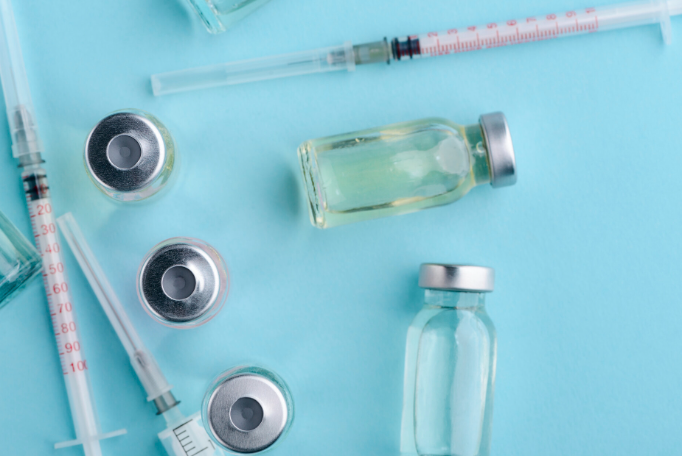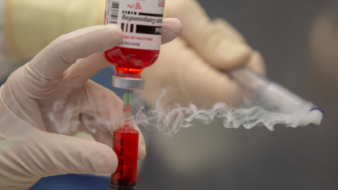
By Adam West, Course and Curriculum Manager at CriticalPoint
In today’s complex healthcare environments, ensuring compliance with USP <797>—especially in the context of immediate-use compounding—is a priority for pharmacy teams, nursing staff, and hospital administrators alike. As regulations evolve, so too must the understanding and implementation of safe, compliant compounding practices that extend beyond the pharmacy cleanroom.
During a recent TRC Healthcare webinar, my colleague Steve Small and I highlighted key updates and challenges around immediate-use compounding, with a focus on regulatory clarity, real-world applications, and safety-driven best practices.
What is USP <797> to non-pharmacy staff?
USP <797> is the enforceable standard governing sterile compounding in U.S. healthcare settings. It establishes requirements for environmental controls, personnel training, labeling, and documentation to reduce the risk of contamination and protect patient safety. The standard applies to all staff involved in sterile compounding, including those performing it outside of cleanrooms or segregated compounding areas (SCAs)—such as during immediate-use or when specific conditions are met or during batch compounding for clinical procedures. Healthcare professionals who may perform USP <797> compounding include:
- anesthesiologists and nurse anesthetists (CRNAs)
- emergency room physicians and nurses
- intensive care Unit (ICU) nurses
- interventional radiology staff
- cardiac cath lab teams
- respiratory therapists
- surgical/operating room nurses
Science Behind the Standards
In the revised chapter, the updated standards are guided by data and a focus on patient safety. The beyond-use date (BUD) has been extended to a maximum of 4 hours to balance the need for maintaining CSP quality with the practical demands of timely medication access across various healthcare settings.¹ This extension is supported by data on the lag phase of microbial growth—a period during which introduced bacterial cells are still adapting to their environment and are not yet actively replicating. As a result, if contamination occurs during compounding, immediate bacterial proliferation is unlikely, allowing for a short window in which the CSP can be safely held prior to administration. These discrepancies underline the importance of careful BUD assignment, based on microbial risk and chemical stability.
Another consideration is that even under optimal conditions with items prepared aseptically, the probability of a contaminated dose is around 0.1% (1 in 1,000). In studies conducted, real-world contamination rates range from 0.3% to 16%.2 These findings highlight why thorough training and consistent education are essential for maintaining aseptic technique.
Training and Competency: More Important than Ever
A major theme from our webinar was the importance of training and competency evaluations. These are no longer just pharmacy concerns. Nurses, anesthesiologists, and other clinical staff must now demonstrate proficiency in:
- aseptic technique
- hand hygiene
- use of compounding equipment (e.g., vials, syringes, proprietary systems)
- documentation of drug amounts, preparation personnel, and BUDs
What’s more, universal SOPs won’t suffice. Departments must have detailed, role-specific protocols that match the exact scope and environment of their compounding activities. For example, what applies in a surgery unit may not apply to a pediatric clinic or an emergency department. Generic policies could result in gaps that pose risks to both compliance and patient safety.
Final Thoughts
Compliance with USP <797> is not confined to the pharmacy walls. Contamination risks and regulatory responsibilities extend to all healthcare professionals involved in sterile preparation. Institutions must assess who is performing immediate-use compounding, evaluate current practices, and implement ongoing training and competency assessments.
Ultimately, mastering these regulations isn’t just about passing inspections—it’s about protecting patients. With clear SOPs, thorough training, and strong cross-departmental coordination, healthcare systems can uphold the highest standards of sterile compounding—even in the most challenging clinical environments.
Watch our recorded webinar on Beyond the Cleanroom: Mastering Hospital Regulation and Training Essentials for USP Immediate-Use Compounding.
Want to view all of our blogs all in one spot? Access our entire Chronicle library here!
Learn about CriticalPoint’s product offerings!
¹Pharmacy Purchasing & Products – USP <797> Immediate-Use CSPs: Small Changes, Big Impact February 2023 Vol.20 No.2 – Page #10
2Moody CA, Eckel SF, Amerine LB. Evaluating the Sensitivity of a Media-Fill Challenge Test Under Various Situations as a Reliable Method for Recommended Aseptic Technique Competency Assessment. J Pharm Technol. 2016;32(2):47-53. doi:10.1177/8755122515607537
Related Resources

The Compounding Chronicles: Are Smoke Studies Still a Thing?

The Compounding Chronicles: Outsourced Suppliers and Shortages and Tariffs, Oh My!

